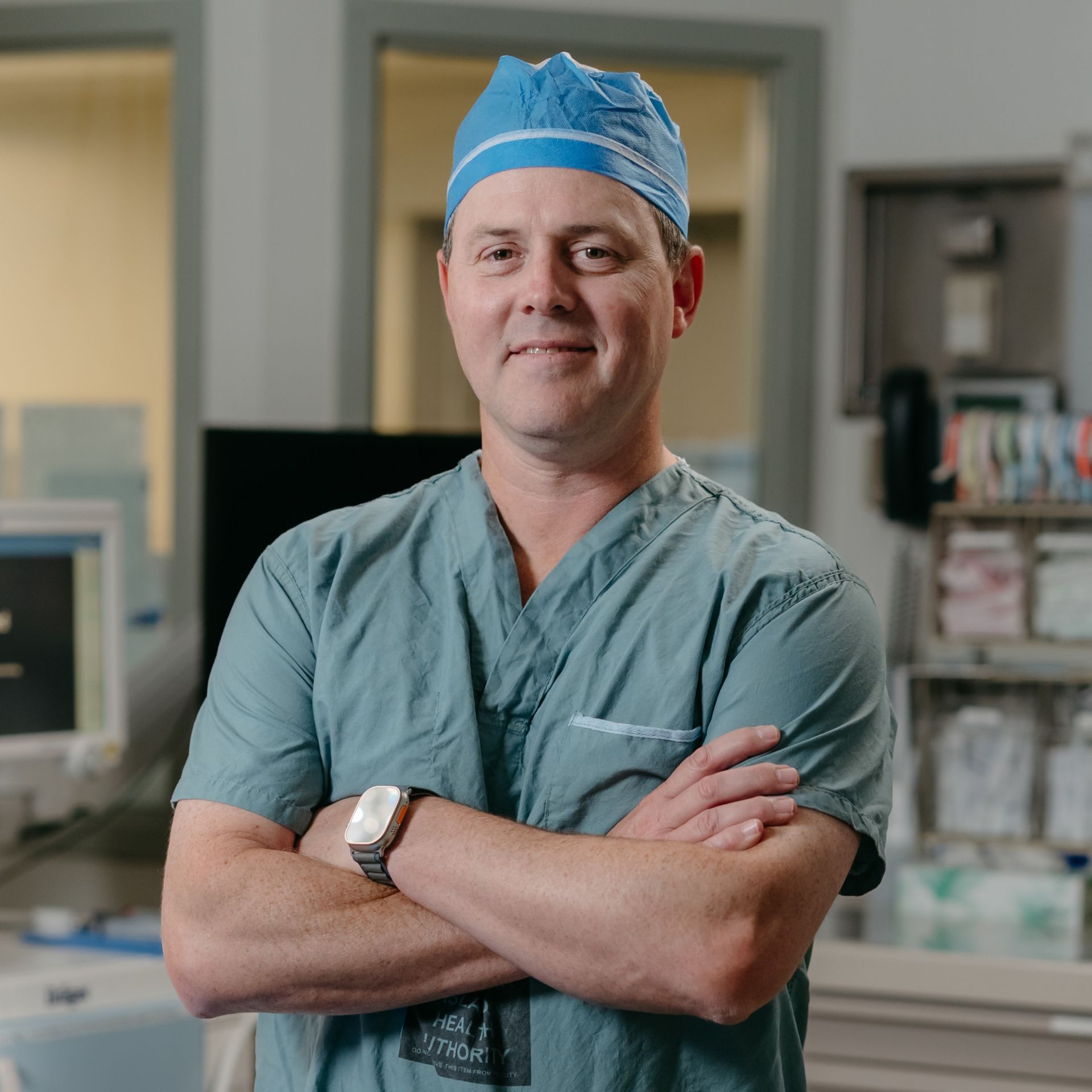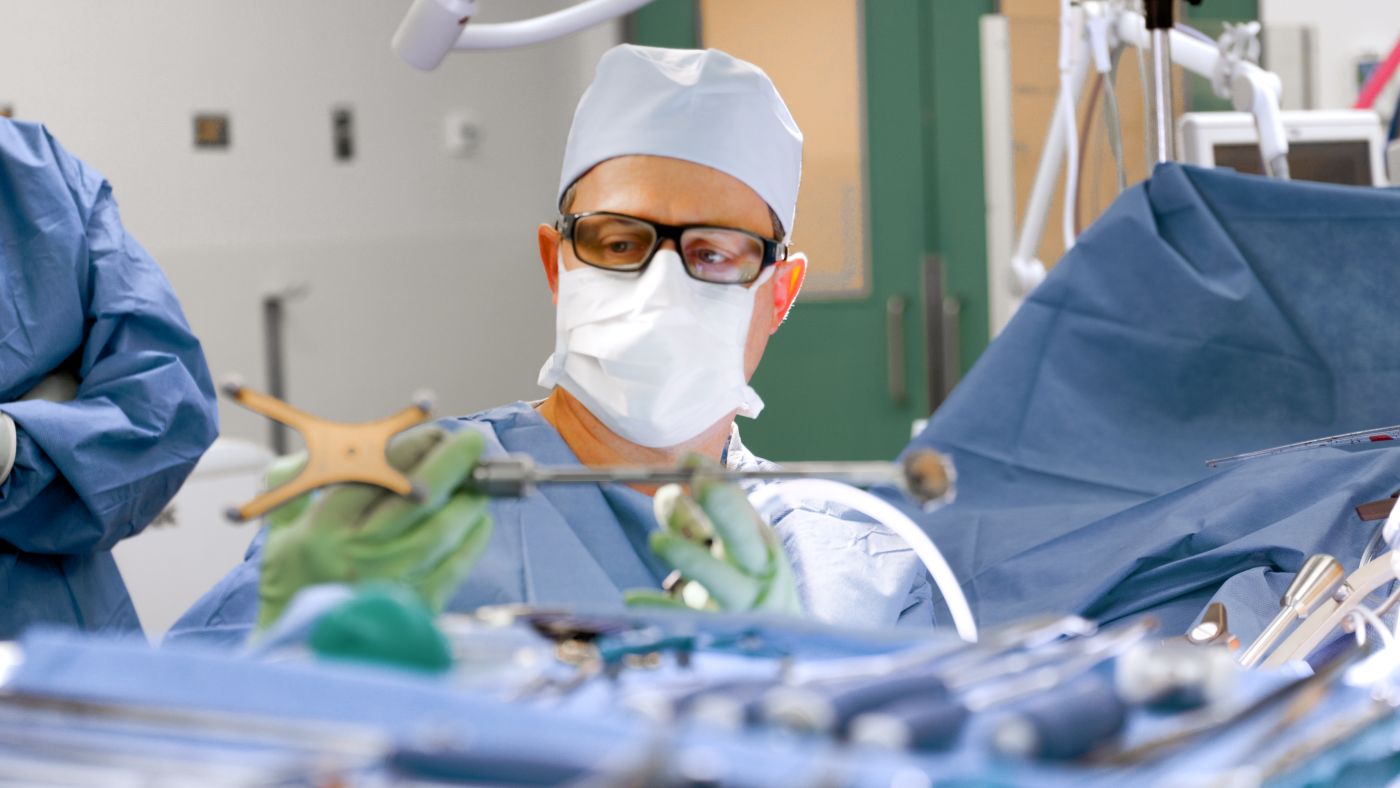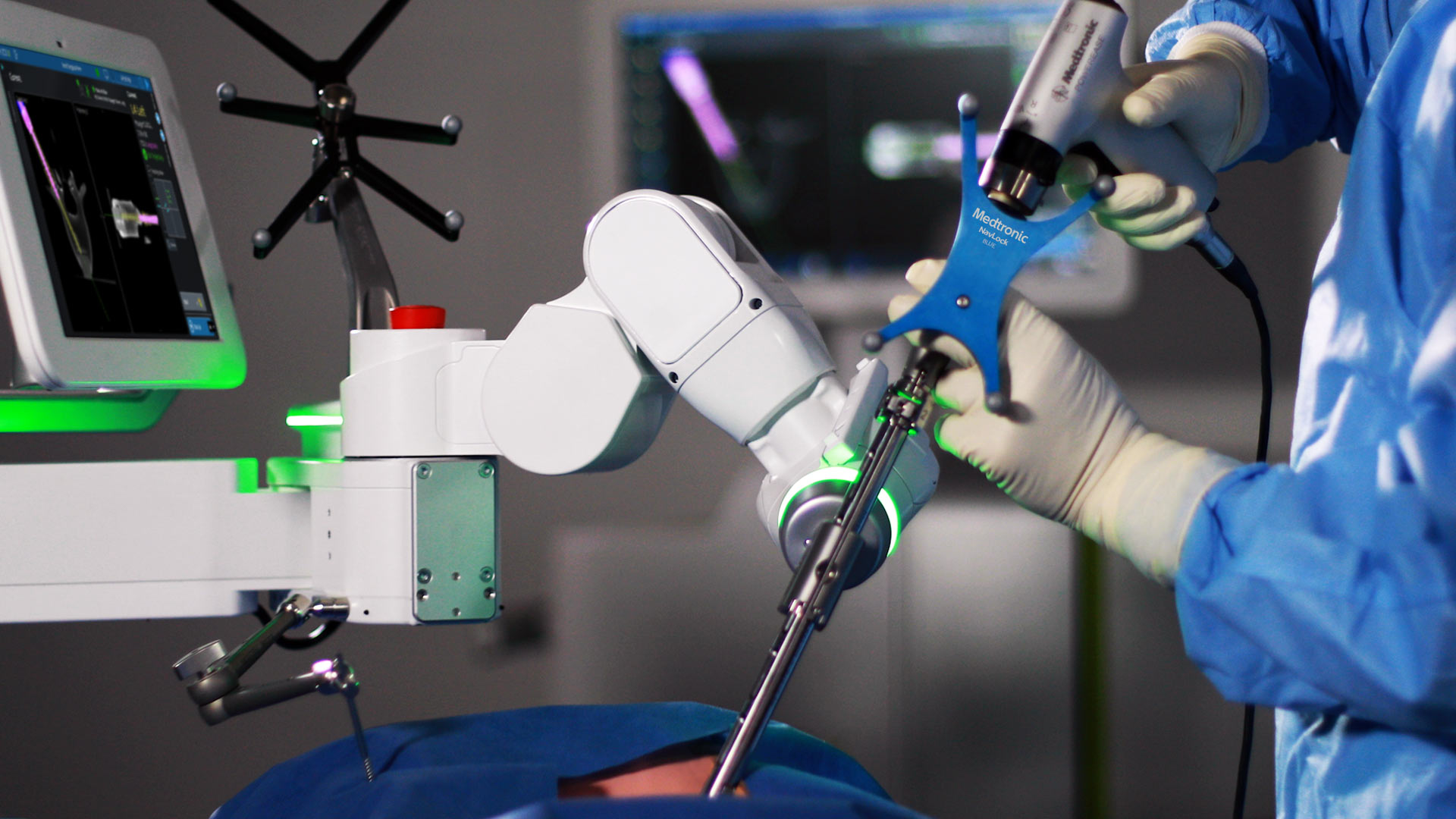 As a neurosurgeon at Victoria General Hospital (VGH) since 2012, I have witnessed transformational progress in our ability to care for thousands of patients across the Island every year. What began as a vision more than a decade ago has grown into one of Canada’s most advanced neurosurgical programs. Today, our team of seven subspecialty neurosurgeons covers the full spectrum of neurosurgical expertise, and our collaborative model ensures that patients benefit from multidisciplinary input, evidence-based protocols, and advanced surgical planning.
As a neurosurgeon at Victoria General Hospital (VGH) since 2012, I have witnessed transformational progress in our ability to care for thousands of patients across the Island every year. What began as a vision more than a decade ago has grown into one of Canada’s most advanced neurosurgical programs. Today, our team of seven subspecialty neurosurgeons covers the full spectrum of neurosurgical expertise, and our collaborative model ensures that patients benefit from multidisciplinary input, evidence-based protocols, and advanced surgical planning.
In Victoria, we are able to take on the most complex cases of the brain and spine. Our team performs craniotomies for tumours and vascular malformations, such as aneurysms which are adjacent to or provide blood supply to elegant brain locations that provide language and motor function. We complete complex spinal reconstructions for spinal deformities, tumours and fractures with and without spinal cord injury. Intricate brain biopsies to detect cancer or other pathology in deep locations of the brain are common and benefit from the most advanced and accurate technology. We also provide specialty care for people with cerebrospinal fluid disorders such as hydrocephalus. These surgeries demand precision, endurance, collaboration, and the most advanced technology available. Some procedures require 90 minutes of intense focus, while others extend beyond 16 hours, reflecting the complexity and dedication involved in delivering the highest standard of neurosurgical care.
I am proud to say there is very little that we cannot do here in our great community of Victoria. And soon, with the arrival of the Mazor neurosurgical robotic system, our team will get a boost to expand the boundaries of what’s possible. We are positioning VGH as a national leader in neurosurgical innovation.
 In surgeries where every movement matters, I can’t emphasize enough how having the latest technology is essential. It can mean the difference between walking or not, independence or lifelong disability. In some cases, it can also mean the difference between life or death.
In surgeries where every movement matters, I can’t emphasize enough how having the latest technology is essential. It can mean the difference between walking or not, independence or lifelong disability. In some cases, it can also mean the difference between life or death.
If you were to step into one of our operating rooms at VGH, you would see that nearly every tool and every technology surrounding our team exists because of community generosity, from navigation systems to microsurgical equipment. Donors like you have been a part of this evolution for years. In 2022, Foundation donors and Miracle Gala guests funded an O-Arm that provides complex 3D images in real time and allows for less invasive surgeries, and shorter recovery times. Last year, donors funded a new set of advanced neuro spine navigation instruments that allows our Division to run two operating rooms safely and simultaneously while also reducing wait times. Your support has allowed us to ensure that patients on Vancouver Island receive the kind of care you would expect at any major academic centre in the world. You are supporting our vision to keep Island patients on the Island, close to home, close to family.
When I first began my career, many of our procedures were highly invasive open surgeries. I would sometimes open a patient from shoulder to pelvis to access the spine. This was traumatic for patients and physically and mentally demanding for care teams. Imagine having to place 20 screws in a patient’s spine with only some tactile feedback to guide us. Today, thanks to donor-funded innovation, our operating rooms function more like a NASA command station. Technology has completely changed what is possible.
Today, we are ready to take another major leap forward. An evolution, so aptly named, because of the generosity that supports the It’s Time for Surgical Evolution campaign.
 Through the Foundation’s campaign, VGH will soon become one of only a few centres in Canada to introduce the Mazor neurosurgical robot and its associated technologies. This system integrates seamlessly with our existing donor-funded equipment and will enable an unparalleled level of precision.
Through the Foundation’s campaign, VGH will soon become one of only a few centres in Canada to introduce the Mazor neurosurgical robot and its associated technologies. This system integrates seamlessly with our existing donor-funded equipment and will enable an unparalleled level of precision.
Guided by us as surgeons, the Mazor robot uses advanced computing to analyze MRI scans and identify the safest, most effective pathways for care. In neurosurgery, location is everything. With this technology, we can navigate delicate corridors with extraordinary accuracy, touching only the tissue that truly requires intervention, and avoiding critical areas such as speech or motor functions.
The impact of minimally invasive robotic technology cannot be overstated for it allows us to do the important work we do with much more confidence. Navigation and robotic guidance bring us closer to 100% accuracy in procedures where a single misplaced screw could cause lifelong disability. This dramatically reduces pain, blood loss, and the need for recovery in the Intensive Care Unit (ICU), allowing patients to return home sooner with fewer complications and less reliance on opioids. Its precision also has a significant effect on revision surgeries and, consequently, on wait lists. This level of accuracy helps ensure patients receive the right treatment the first time.
The Mazor robot empowers patients to receive the highest standard of precision care, and while we have always reassured our patients that their safety is our priority, the Mazor robot gives us added confidence to tell them they are truly receiving the very best in surgery. For some patients, this technology means we can offer treatment that was previously too risky. Take degenerative scoliosis, for example—an incredibly common condition in women aged 65 to 90. Traditional treatment typically involves major surgery lasting 12 to 14 hours to realign the spine and restore normal posture. Post-surgery, patients often spend several days in the ICU, which places a significant burden on VGH, where stroke and trauma cases from across the Island already compete for critical care resources. Blood loss can be substantial, sometimes measured in litres. As a surgeon, I have had to carefully weigh which patients could safely undergo this type of surgery.
Now, thanks to the Mazor neurosurgical robot, I can approach all my patients with this surgical treatment. I will be seeing patients who are well into their 80s, because I know I can operate safely. The accuracy you get through this technology allows patients to live with less pain in those later years that are so important.
 While 99% of what we do is for our patients, the Mazor robot also offers significant benefits to those of us in the operating room. This technology protects the health of providers: after years of heavy radiation exposure, robotics and imaging guidance can reduce X-ray use by up to 80%. During my time practicing in Victoria alone, I have been exposed to well over 100,000 X-rays. I want to protect not only myself, but also the nurses in the room who pour so much of themselves into this work.
While 99% of what we do is for our patients, the Mazor robot also offers significant benefits to those of us in the operating room. This technology protects the health of providers: after years of heavy radiation exposure, robotics and imaging guidance can reduce X-ray use by up to 80%. During my time practicing in Victoria alone, I have been exposed to well over 100,000 X-rays. I want to protect not only myself, but also the nurses in the room who pour so much of themselves into this work.
As a surgeon, I also firmly believe the Mazor robotic technology will help prolong the careers of our neurosurgeons. The precise, minute movements required in our field take a toll—my own fingers are arthritic from years of delicate work—but the Mazor will support and amplify those motions, reducing strain while increasing accuracy.
This evolution also strengthens our ability to recruit and retain outstanding surgeons. When we invest in the best technology, we attract the best people—graduates from top programs across Canada and the United States—who want to practice at the leading edge of medicine. Your generosity helps us build a team of the highest calibre right here at home.
The opportunities ahead are profound as we grow and move towards providing autonomous care for patients in Island Health so they no longer require transport to the mainland for specialty care. We hope to add the surgical management of Parkinson’s Disease and endovascular approaches to Cerebrovascular Diseases such as strokes and subarachnoid hemorrhage. What you are enabling here is nothing short of future-proofing the neurosurgical care our community relies on.
We already have our rollout plan in place to integrate this technology into everyday surgical practice, and I can’t wait to write you again when we perform the first robotic-assisted neurosurgery. Thanks to the Victoria Hospitals Foundation’s leadership—and your trust and generosity—we are moving faster than anyone believed possible.
I thank those of you who have supported the It’s Time for Surgical Evolution campaign to date, and those who will be supporters of this evolution. Please be proud of what your generosity is making real. The impact is undeniable.
The future of neurosurgery is evolving before us. Thank you for helping shape that future for our community.
– Dr. Daniel Warren, Division Head of Neurosurgery at VGH




